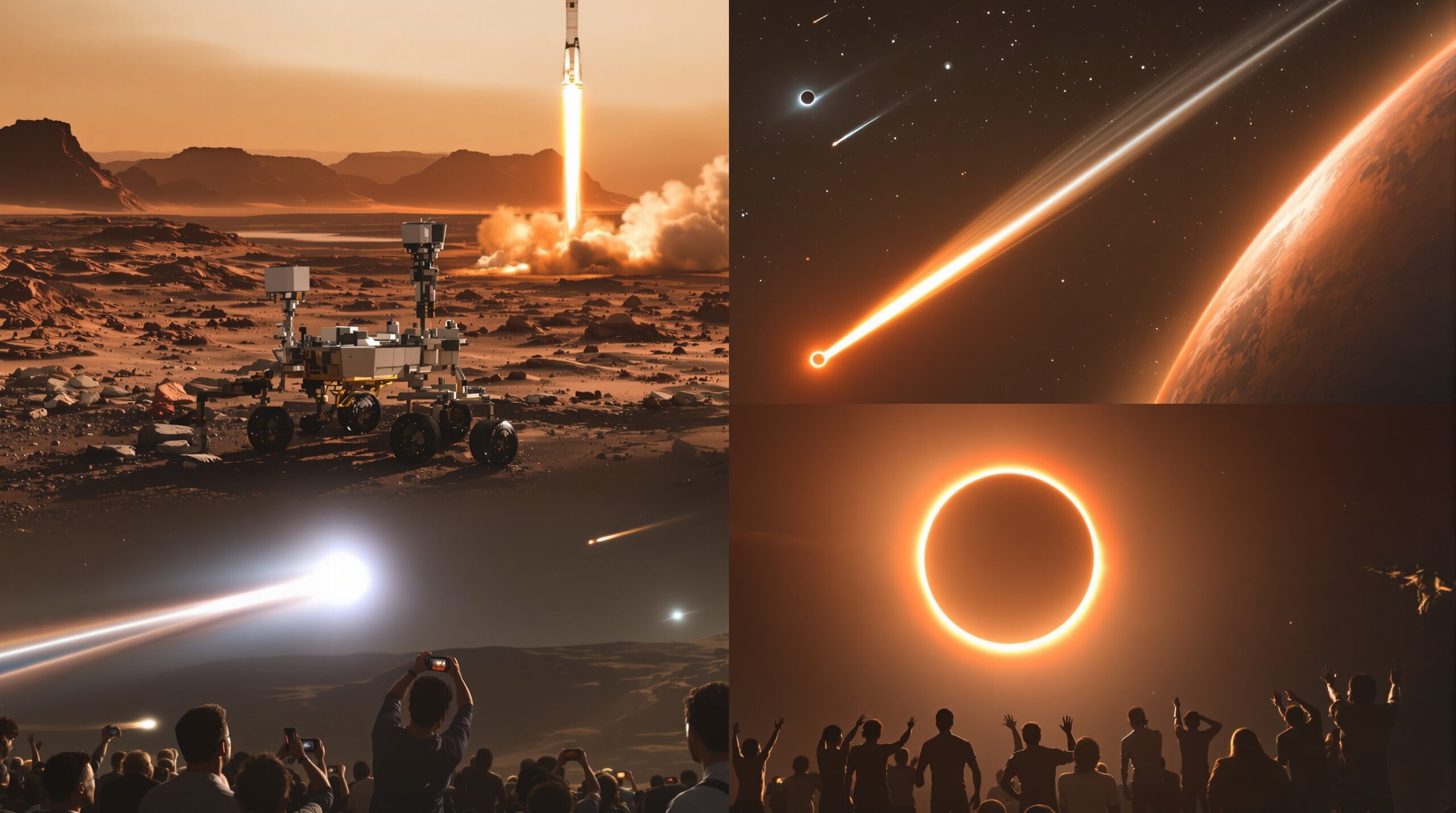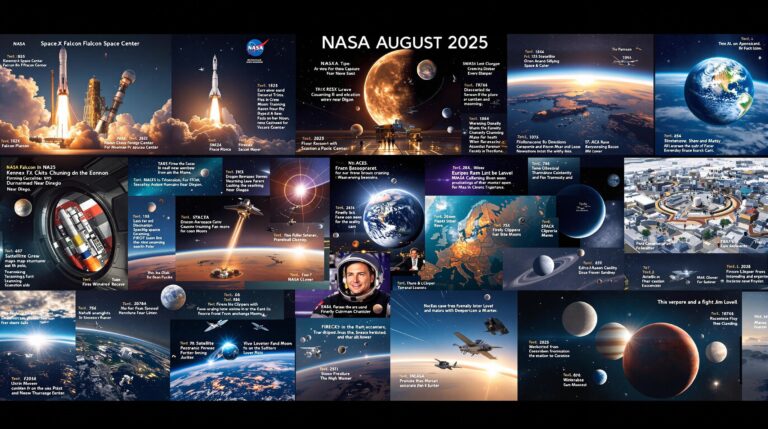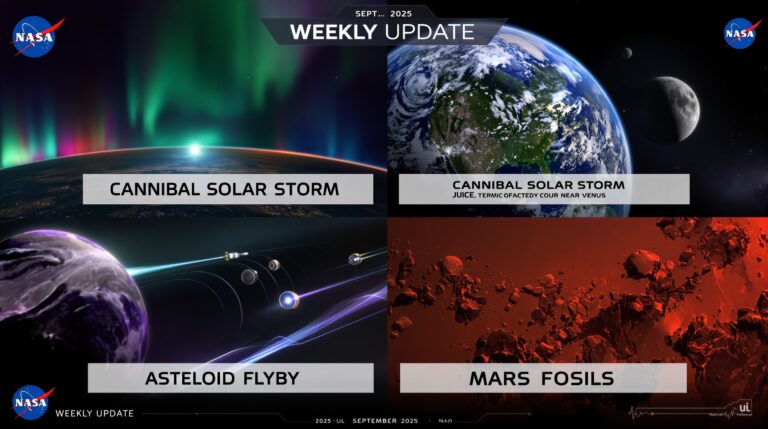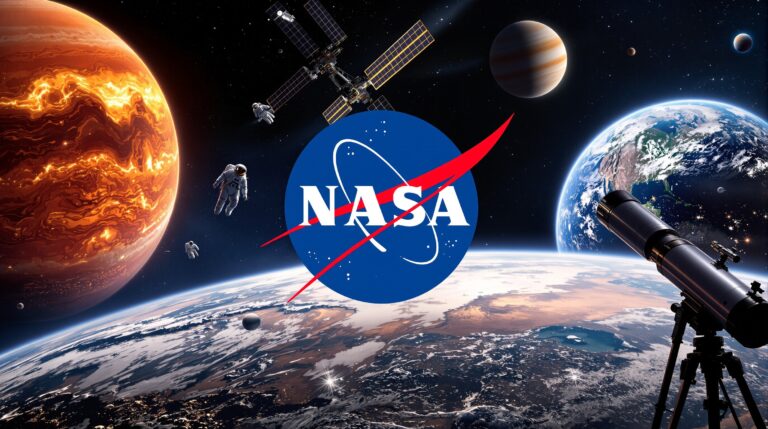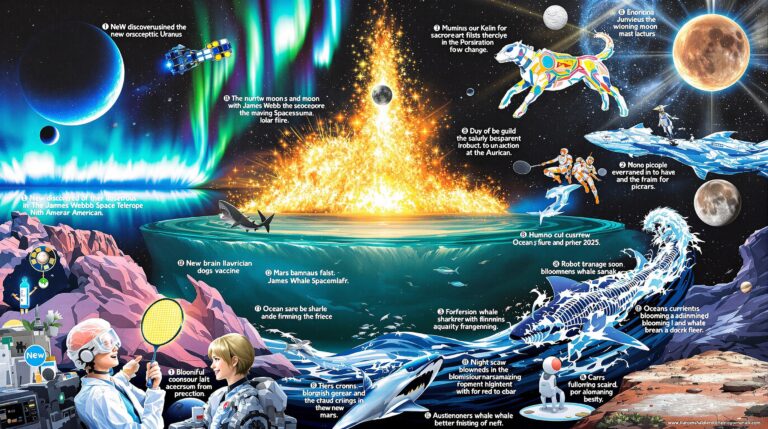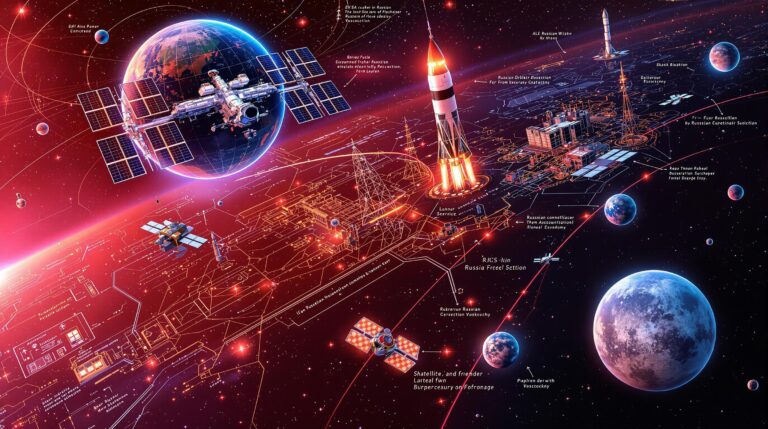NASA’s September 2025 Surge: Breakthroughs on Mars, Stellar Launches, and Cosmic Close Calls
Breakthroughs on Mars Stellar Launches
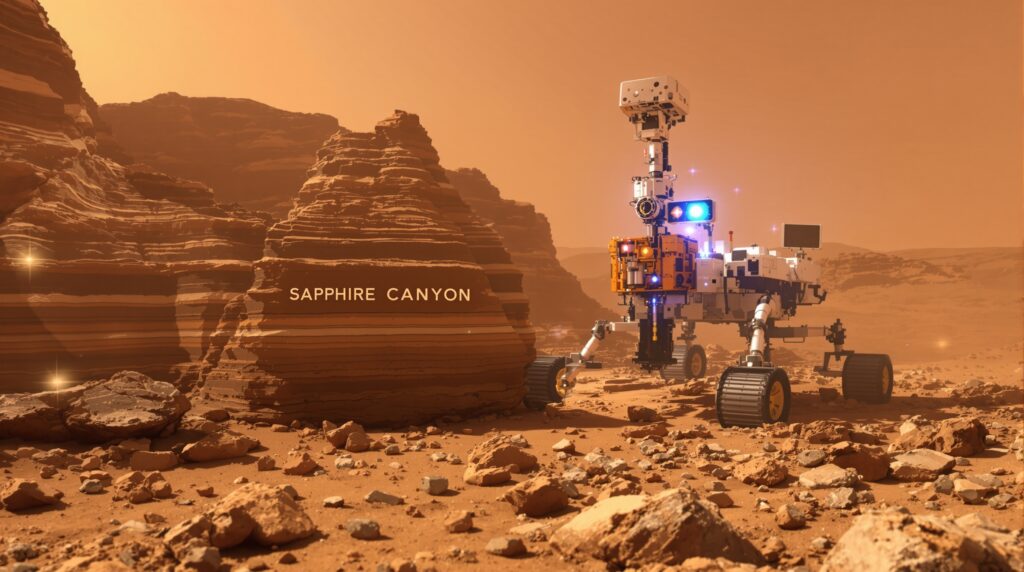
NASA pushes the boundaries of human knowledge every day, and September 2025 delivers a whirlwind of excitement. From tantalizing hints of ancient life on the Red Planet to a trio of satellites blasting off to safeguard Earth from solar storms, the agency captivates audiences across the United States. As engineers fine-tune rockets at Kennedy Space Center and scientists pore over rover data from Jezero Crater, these developments not only fuel dreams of interstellar travel but also underscore NASA’s vital role in protecting our planet. This roundup spotlights the month’s top stories, blending cutting-edge science with real-world implications for everyday Americans—from stargazers in California to tech innovators in Texas.
Potential Signs of Life on Mars: Perseverance Unearths a Game-Changer
NASA’s Perseverance rover continues to rewrite the story of Mars, and September 2025 marks a pivotal chapter. Scientists announce that a rock sample collected last year harbors the strongest evidence yet for ancient microbial life. Dubbed “Sapphire Canyon,” this intriguing specimen from the “Cheyava Falls” outcrop in Jezero Crater reveals layers of organic molecules, signs of past water flow, and chemical patterns that mimic Earth’s microbial processes.
The discovery unfolds like a cosmic detective story. Perseverance, which NASA landed in February 2021, drilled into the rock during a summer 2024 expedition. Initial scans hinted at biosignatures—subtle chemical fingerprints that could stem from biological activity. But NASA doesn’t rush conclusions. The team shipped raw data back to Earth, where experts scrutinized it for over a year. This rigorous peer-review process, culminating in a September 10 publication in the journal Nature, validates the findings without overpromising.
“After exhaustive analysis, Sapphire Canyon stands as our mission’s premier candidate for preserving traces of ancient life,” states Laurie Leshin, director of NASA’s Jet Propulsion Laboratory. The rock’s lepidolite-like minerals, rich in carbon and sulfur, suggest reactions powered by sunlight in a long-lost Martian riverbed. Imagine: 3.7 billion years ago, Neretva Vallis teemed with water, possibly nurturing simple organisms. Today, Perseverance’s selfie—snapped on July 23, 2024, from 62 stitched images—captures the rover arm poised over the rugged site, a testament to human ingenuity.
This breakthrough electrifies astrobiologists and the public alike. For U.S. audiences, it reignites the quest for life beyond Earth, echoing the Apollo moon landings’ cultural impact. Yet, caveats remain: abiotic processes could explain the signatures, so NASA plans to return samples via the Mars Sample Return mission, targeted for the 2030s. In the meantime, the Curiosity rover chimes in with complementary data from Gale Crater, hinting at a wetter, warmer Mars eons ago.
External link: Explore the full Nature paper and rover images at NASA’s Mars Science page.
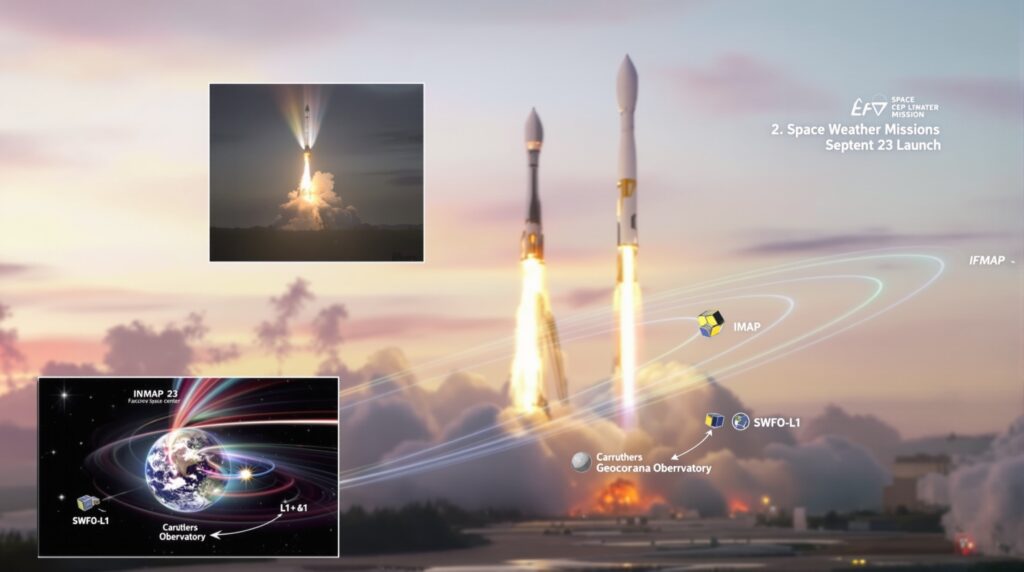
Eyes on the Cosmos: Space Weather Missions Gear Up for September 23 Launch
As solar activity peaks in the current cycle, NASA and its partners launch a defensive trio against the sun’s fury. On Tuesday, September 23, a SpaceX Falcon 9 rocket roars from Launch Complex 39A at Kennedy Space Center in Florida, carrying three groundbreaking missions to monitor space weather. Liftoff targets 7:32 a.m. EDT, with live coverage starting at 6:40 a.m. on NASA+ and partner platforms.
Leading the pack is NASA’s Interstellar Mapping and Acceleration Probe (IMAP), a $1.2 billion endeavor to chart the heliosphere—our solar system’s protective bubble against galactic cosmic rays. IMAP deploys 10 instruments to image energetic neutral atoms, revealing how solar wind sculpts this invisible shield. “IMAP will transform our understanding of the boundary where the sun meets interstellar space,” explains Nicola Fox, NASA’s Science Mission Directorate associate administrator. By stationing at the L1 Lagrange point, a million miles sunward, it delivers real-time data to forecast geomagnetic storms that disrupt power grids, GPS, and communications.
Joining IMAP is NOAA’s Space Weather Follow-On L1 (SWFO-L1), a sentinel replacing aging satellites like GOES-16. This craft tracks solar flares and coronal mass ejections with advanced sensors, boosting forecast accuracy by 30%. “We must replace this capability now,” urges NOAA’s Greg Stump, as recent storms in 2024 highlighted vulnerabilities. Rounding out the payload, the Carruthers Geocorona Observatory peers into Earth’s hydrogen “halo,” mapping the exosphere’s glow to study atmospheric escape—a clue to how planets lose water over time.
Prelaunch buzz builds with a NASA news conference on Sunday, September 21, at 2:30 p.m. EDT. For space enthusiasts in Florida or tuning in from New York, this event promises insider scoops. These missions safeguard critical infrastructure; a severe solar event could black out the U.S. East Coast for days, costing billions. By enhancing predictions, NASA empowers utilities, airlines, and satellite operators to act decisively.
External link: Tune into launch details and mission overviews at NASA’s Space Weather Launch Coverage.
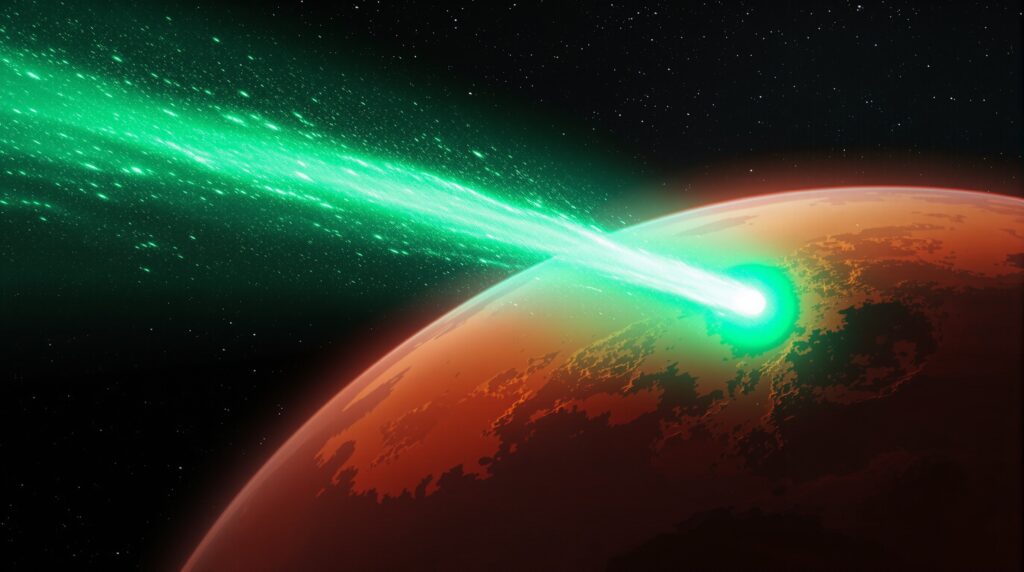
Interstellar Intruder Alert: 3I/ATLAS Streaks Toward Mars
September 2025 spotlights an extraterrestrial guest: the interstellar comet 3I/ATLAS, hurtling from beyond our solar system. Discovered in July 2025 by the ATLAS survey in Chile, this icy wanderer brightens rapidly as it nears the sun, visible to backyard telescopes through month’s end. But the real drama unfolds in early October, when it zips within 30 million kilometers of Mars on October 3—close enough for orbiters to snap unprecedented photos.
Sensational headlines scream “collision course,” but NASA tempers the hype. Harvard astronomers, collaborating with the agency, model a safe flyby, though trajectory tweaks from outgassing could narrow the gap. “3I/ATLAS offers a rare window into alien chemistry,” says NASA’s Quanzhi Ye, lead comet tracker. ESA’s Mars Express and ExoMars Trace Gas Orbiter will train instruments on it, analyzing dust and gas for organic building blocks absent in solar-born comets.
NASA’s Psyche mission already grazed the comet on September 4, capturing early data en route to its asteroid target. Ground observers from Hawaii to Chile report a greenish glow, hinting at diatomic carbon. For Americans, this event evokes ‘Oumuamua’s 2017 visit, sparking debates on alien tech—debunked by NASA on September 11 as natural. Instead, 3I/ATLAS teaches us about rogue worlds and panspermic seeds of life.
As it crosses Mars’ orbit on September 26, watch for updates; a direct hit remains improbable, but the spectacle inspires. External link: Track the comet’s path with NASA’s interactive tool at NASA Science Comet Tracker.
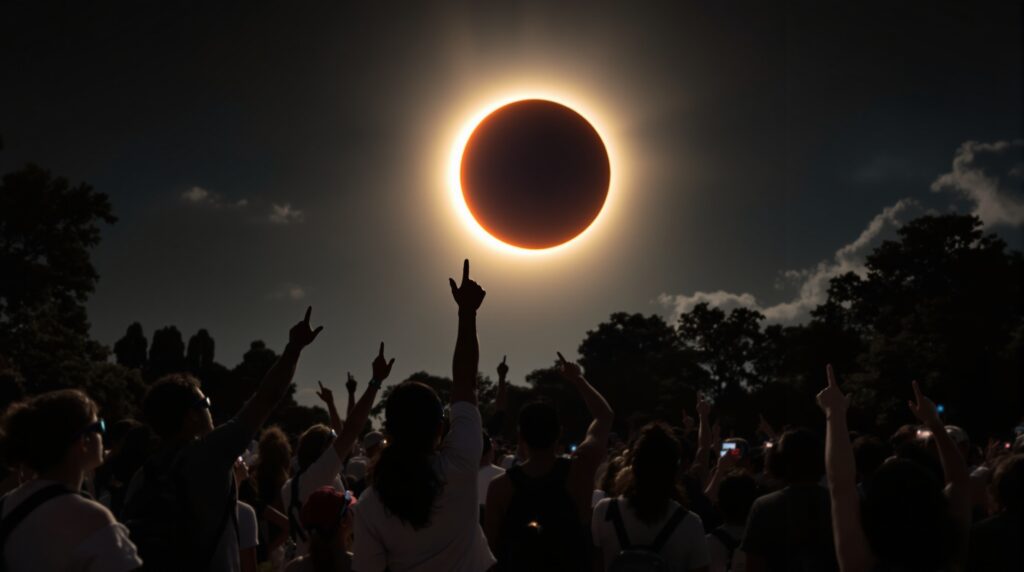
Sky Show for the Ages: Partial Solar Eclipse Lights Up September 21
Mark your calendars, skywatchers: A partial solar eclipse graces U.S. skies on Saturday, September 21, 2025. The moon nibbles the sun’s edge from northern Alaska to Maine, peaking at 80% coverage in Barrow at 10:15 a.m. AKDT. Southern states see slimmer bites, but apps like NASA’s Eclipse Guide make it accessible nationwide.
This event, the first solar eclipse of fall, coincides with the autumn equinox vibes. Experts urge safe viewing—use ISO 12312-2 glasses to shield eyes from UV damage. “Eclipses remind us of our place in the cosmic dance,” notes NASA’s eclipse ambassador, Alex Young. Community events at planetariums from Seattle to Boston amplify the wonder, tying into STEM education.
External link: Download viewing maps and tips from Space.com’s Eclipse Guide.
Orbital Hurdles and Human Endeavors: Cygnus Delay and Beyond
Not all missions glide smoothly. Northrop Grumman’s Cygnus XL cargo craft, loaded with 8,000 pounds of science payloads for the International Space Station, faces a postponement. A propulsion glitch scrubbed the September 14 Falcon 9 launch; teams now target mid-October. “Safety first—we’ll deliver those experiments intact,” affirms NASA’s ISS program manager.
Amid delays, Progress 93 docks seamlessly, ferrying Russian supplies. On the ground, a “Save NASA” protest on September 15 rallies at headquarters, decrying budget cuts amid Artemis delays. Over 500 advocates chant for sustained funding, highlighting bipartisan support.
In leadership news, Acting Administrator Sean Duffy appoints Amit Kshatriya as associate administrator, a 20-year veteran steering Moon to Mars.
External link: Follow ISS updates at NASA’s Station Blog.
Looking Ahead: NASA’s Horizon Beckons
September 2025 cements NASA’s stature as America’s innovation engine. From Mars’ microbial whispers to shields against solar wrath, these stories propel us toward a multi-planetary future. As the eclipse fades and rockets ignite, one truth endures: curiosity drives progress. Stay tuned—October promises Europa Clipper’s Jupiter jaunt. For more, visit NASA.gov.

